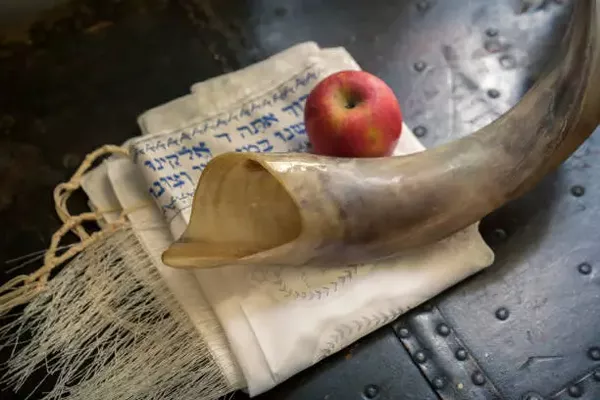Rosh Hashanah, the Jewish New Year, is a time for reflection, renewal, and celebration. Understanding the traditions, rituals, and significance of this important holiday will help you observe it with meaning and respect. This article provides a thorough guide to observing Rosh Hashanah, including its historical context, customs, and how to participate in its observances.
Historical and Religious Significance
1. Origins of Rosh Hashanah
Rosh Hashanah, meaning “Head of the Year” in Hebrew, marks the beginning of the Jewish New Year. It occurs on the first and second days of Tishrei, the seventh month of the Hebrew calendar. The holiday is a time for introspection and prayer, as well as for celebrating the creation of the world and the beginning of a new year.
2. Religious Importance
According to Jewish tradition, Rosh Hashanah is one of the High Holy Days, a period of reflection and repentance leading up to Yom Kippur. The holiday emphasizes self-examination and the opportunity to start anew. It is a time to seek forgiveness, make amends, and set intentions for the coming year.
Preparations for Rosh Hashanah
1. Spiritual Preparation
Repentance: Leading up to Rosh Hashanah, individuals are encouraged to reflect on their actions over the past year and seek forgiveness from those they may have wronged.
Self-Reflection: Set aside time for personal reflection and prayer. This can involve reading relevant texts, engaging in meditation, or attending special services.
2. Physical Preparations
Cleaning the Home: Many people clean their homes to prepare for the holiday. This symbolizes the act of cleansing one’s life and making space for a fresh start.
Purchasing Special Foods: Traditional foods, such as apples, honey, and challah, are prepared in advance to celebrate the holiday’s customs.
Observing the Rituals of Rosh Hashanah
1. Attending Synagogue Services
Traditional Prayers: Attend synagogue services, where special prayers are recited, including the Machzor, the special prayer book for the High Holy Days.
Shofar Blowing: One of the most significant rituals is the blowing of the shofar, a ram’s horn, which is sounded during synagogue services. The shofar’s blasts are a call to repentance and spiritual awakening.
2. Observing the Shabbat
Holiday and Shabbat Convergence: Rosh Hashanah can fall on Shabbat (the Sabbath), and when this occurs, special prayers and rituals combine both observances. This involves unique liturgical elements and a deeper reflection on the significance of the day.
Traditional Foods and Meals
1. Symbolic Foods
Apples and Honey: It is customary to eat apples dipped in honey to symbolize a sweet new year.
Challah: The round challah bread represents the cycle of the year and is often eaten with honey.
Pomegranate: Eating pomegranate seeds symbolizes the wish for a year filled with as many merits as the seeds in the fruit.
2. Festive Meals
Family Gatherings: Rosh Hashanah meals are often shared with family and friends. It is a time for festive dining and reflecting on the year ahead.
Special Dishes: Traditional dishes vary by community but may include brisket, tzimmes (a sweet carrot and sweet potato dish), and gefilte fish.
Customs and Traditions
1. Tashlich Ceremony
Symbolic Ritual: The Tashlich ceremony, performed on the afternoon of the first day of Rosh Hashanah, involves casting bread crumbs or small pieces of paper into a body of water. This ritual symbolizes the casting away of sins and starting the new year with a clean slate.
2. Sending Greeting Cards
New Year Wishes: Many people send Rosh Hashanah cards to friends and family, wishing them a sweet and prosperous year. These cards often include traditional blessings and messages of renewal.
Engaging with the Community
1. Community Events
Participating in Events: Many Jewish communities host Rosh Hashanah events, such as communal dinners, educational talks, and cultural programs. Participating in these events can enhance your understanding of the holiday and foster a sense of community.
2. Charity and Good Deeds
Acts of Kindness: Engaging in acts of charity and kindness is encouraged during Rosh Hashanah. This can include donating to charity, volunteering, or helping those in need.
Personal Reflection and Goal Setting
1. Setting Intentions
New Year’s Resolutions: Take time to set personal goals and intentions for the coming year. Reflect on areas of growth, improvement, and positive change.
Journaling: Keeping a journal can be a useful tool for tracking your reflections, goals, and progress throughout the year.
2. Spiritual Growth
Learning and Study: Use the period leading up to and including Rosh Hashanah to study Jewish texts and deepen your spiritual understanding. This might involve reading Torah portions, attending study groups, or engaging with religious teachings.
Addressing Common Questions
1. How Long Does Rosh Hashanah Last?
Duration: Rosh Hashanah lasts for two days, beginning at sunset on the first day of Tishrei and ending at nightfall on the second day.
2. What Should I Wear for Rosh Hashanah Services?
Dress Code: It is customary to wear formal or semi-formal attire when attending synagogue services. Many people choose to wear white or new clothes as a symbol of purity and renewal.
3. Are There Any Specific Prohibitions?
Work and Activities: On Rosh Hashanah, work is generally prohibited in accordance with Jewish law. This includes activities such as cooking and using electronic devices. It is a day dedicated to rest, prayer, and reflection.
See also: What’s the Reason for St Patrick’s Day?
Conclusion
Observing Rosh Hashanah offers an opportunity for spiritual renewal, personal reflection, and celebration of the Jewish New Year. By understanding and participating in the traditions, rituals, and customs associated with this significant holiday, you can enrich your experience and embrace the new year with intention and meaning. Whether through attending synagogue services, sharing festive meals, or engaging in acts of charity, Rosh Hashanah serves as a time to reflect on the past year and set a positive course for the future.

